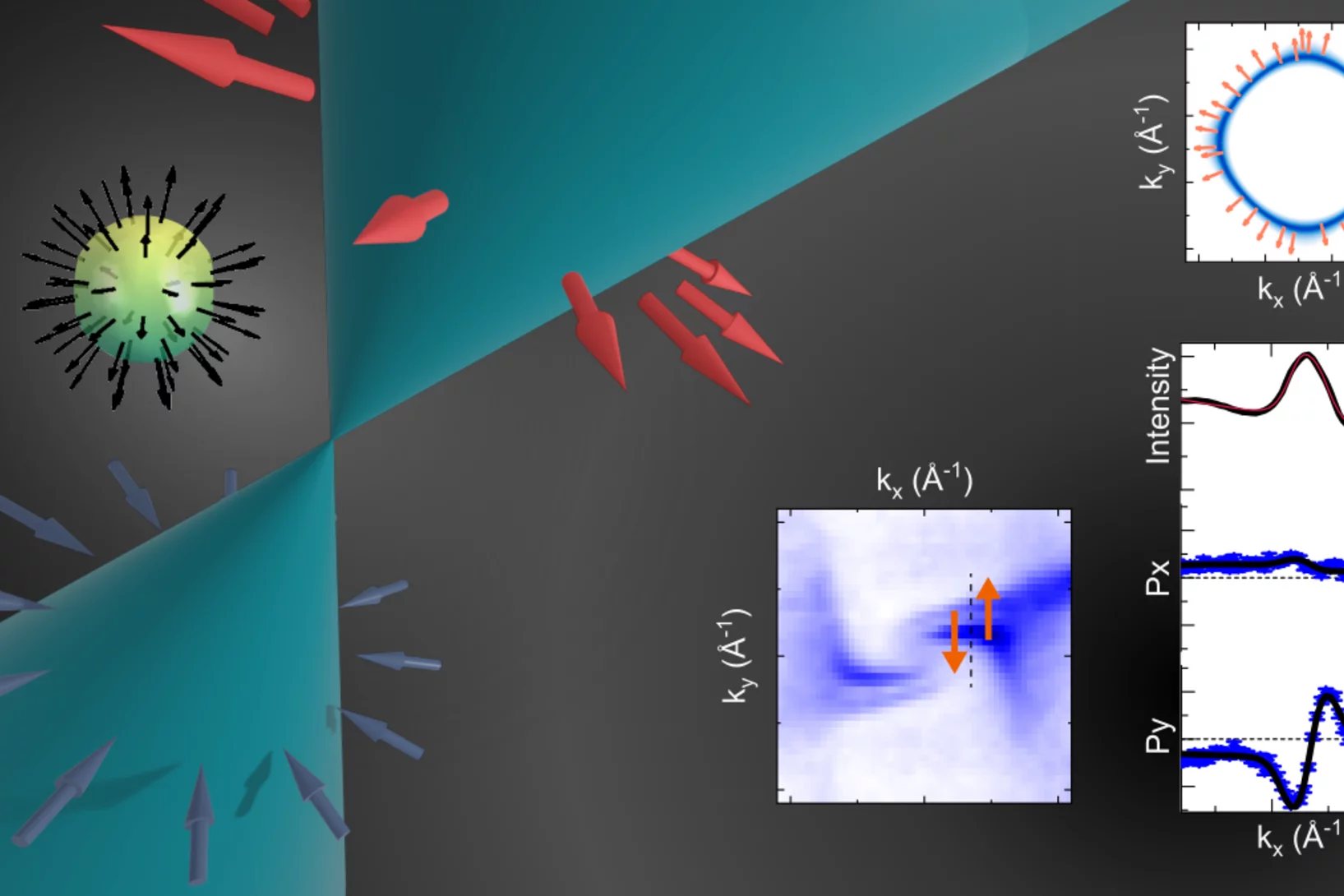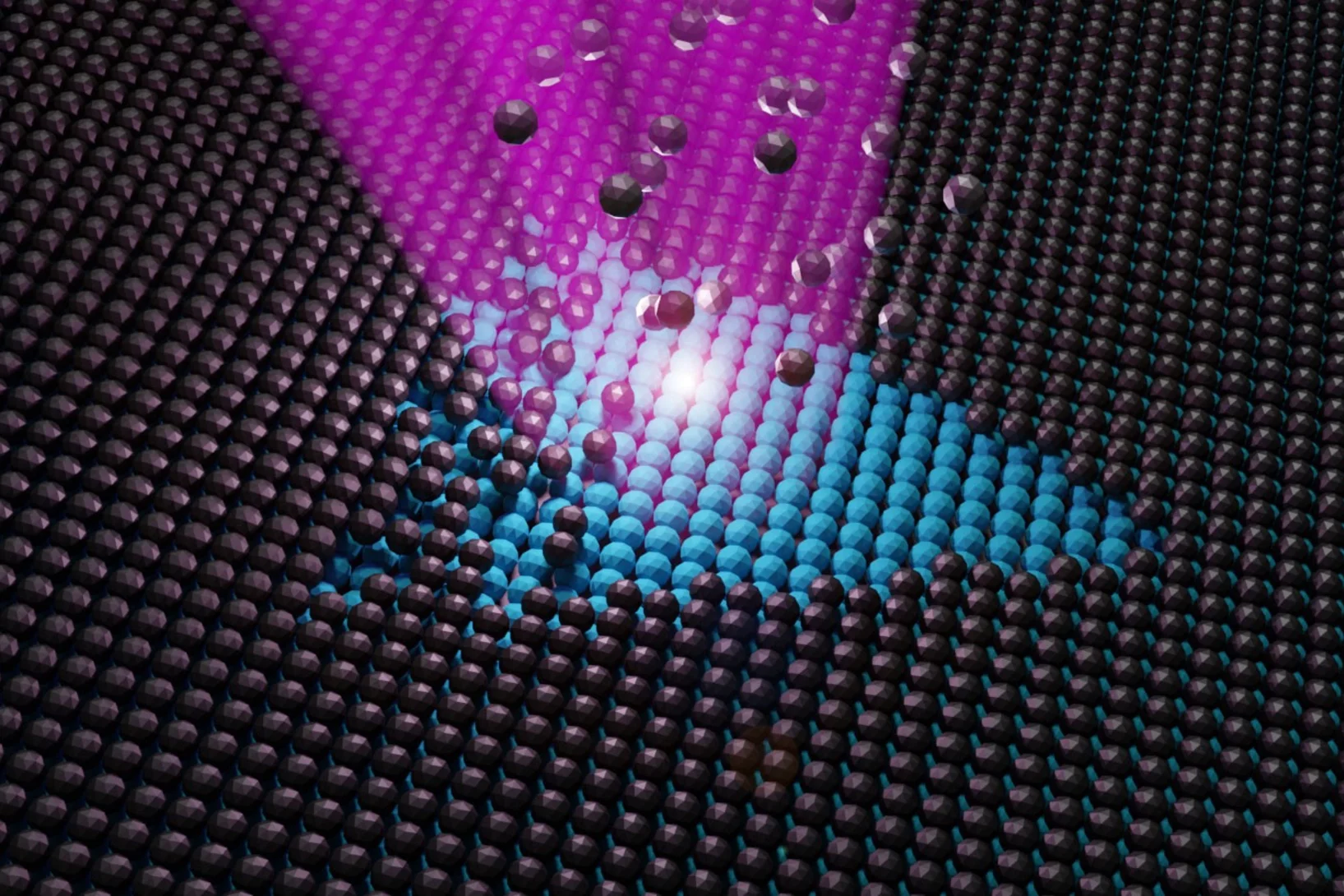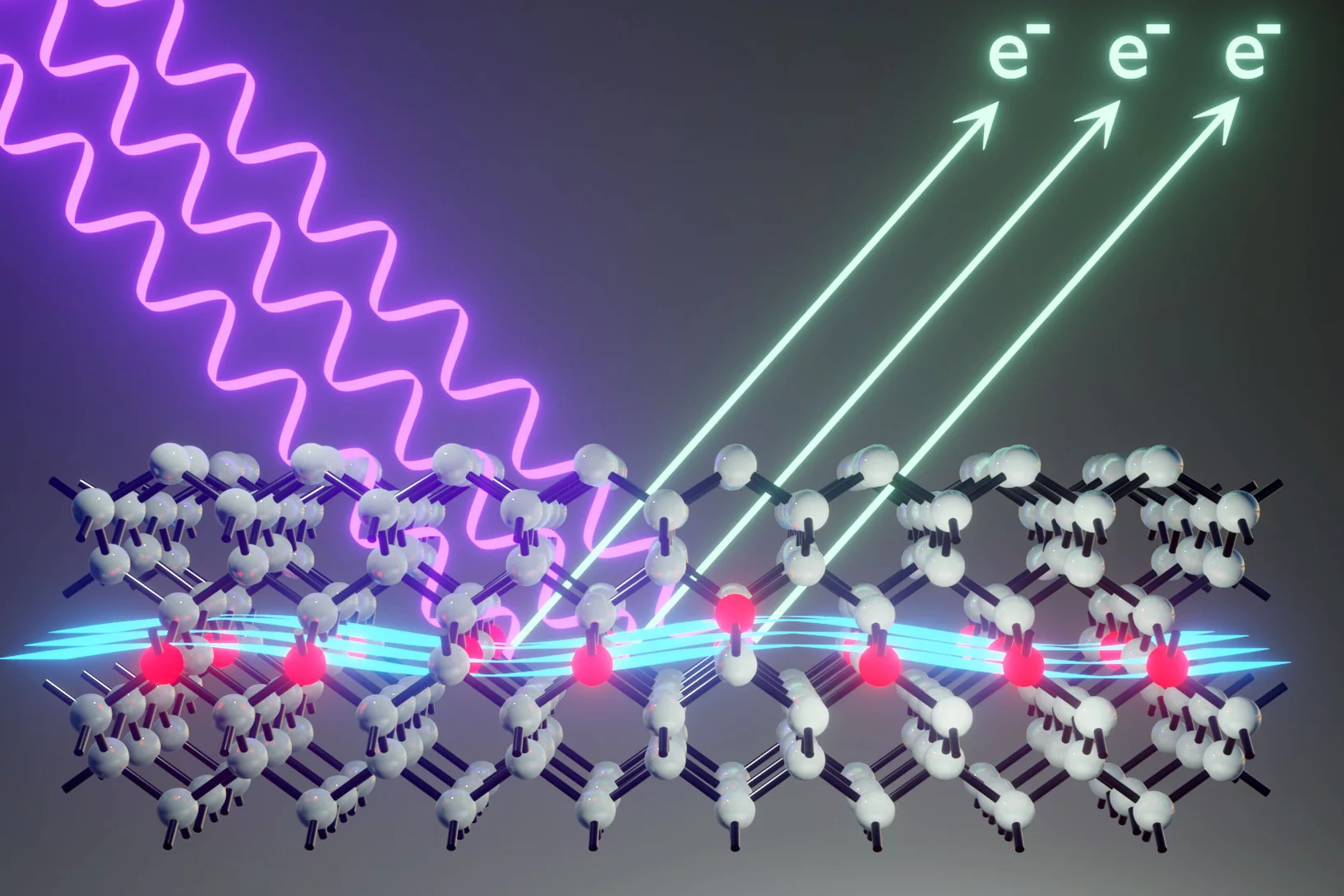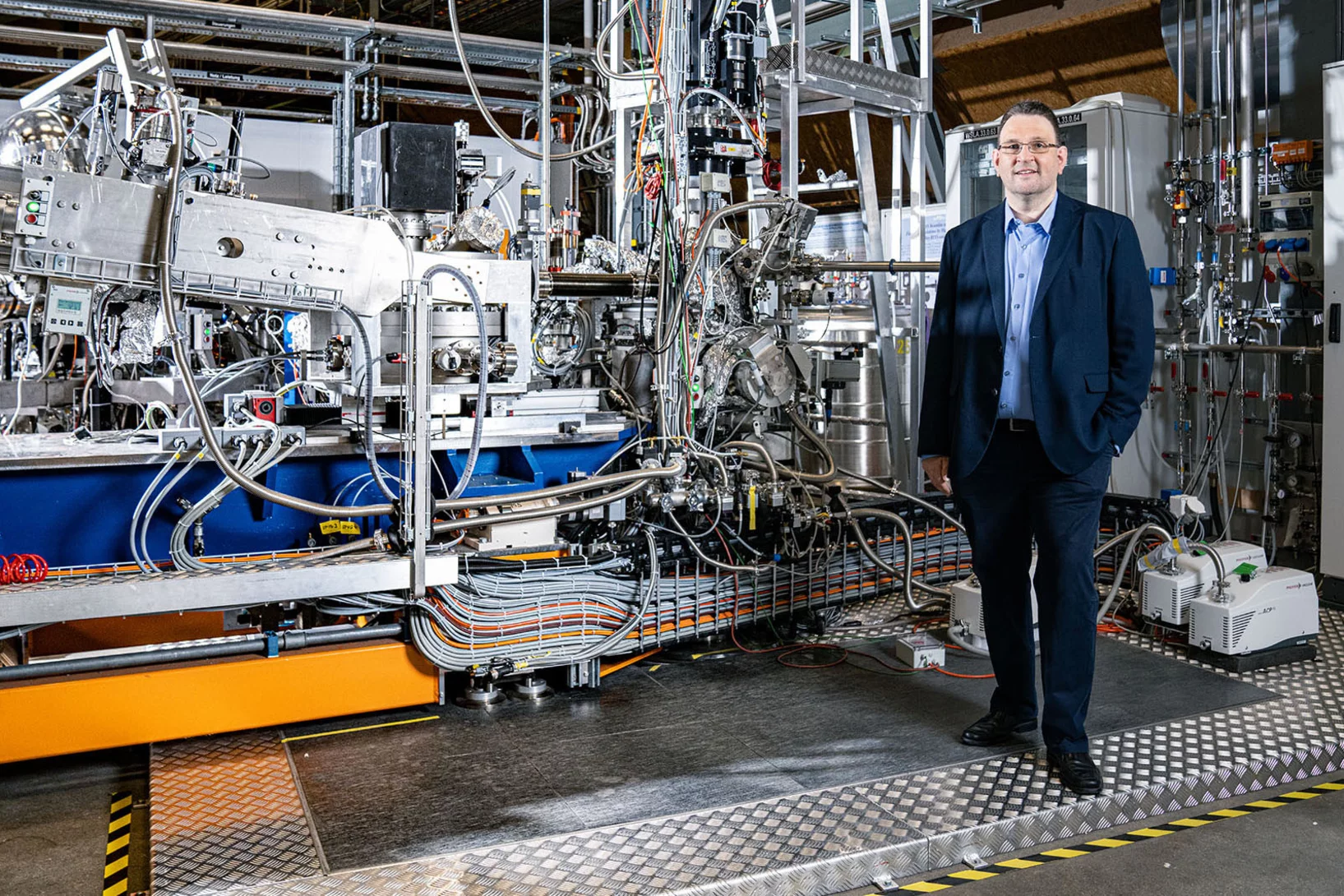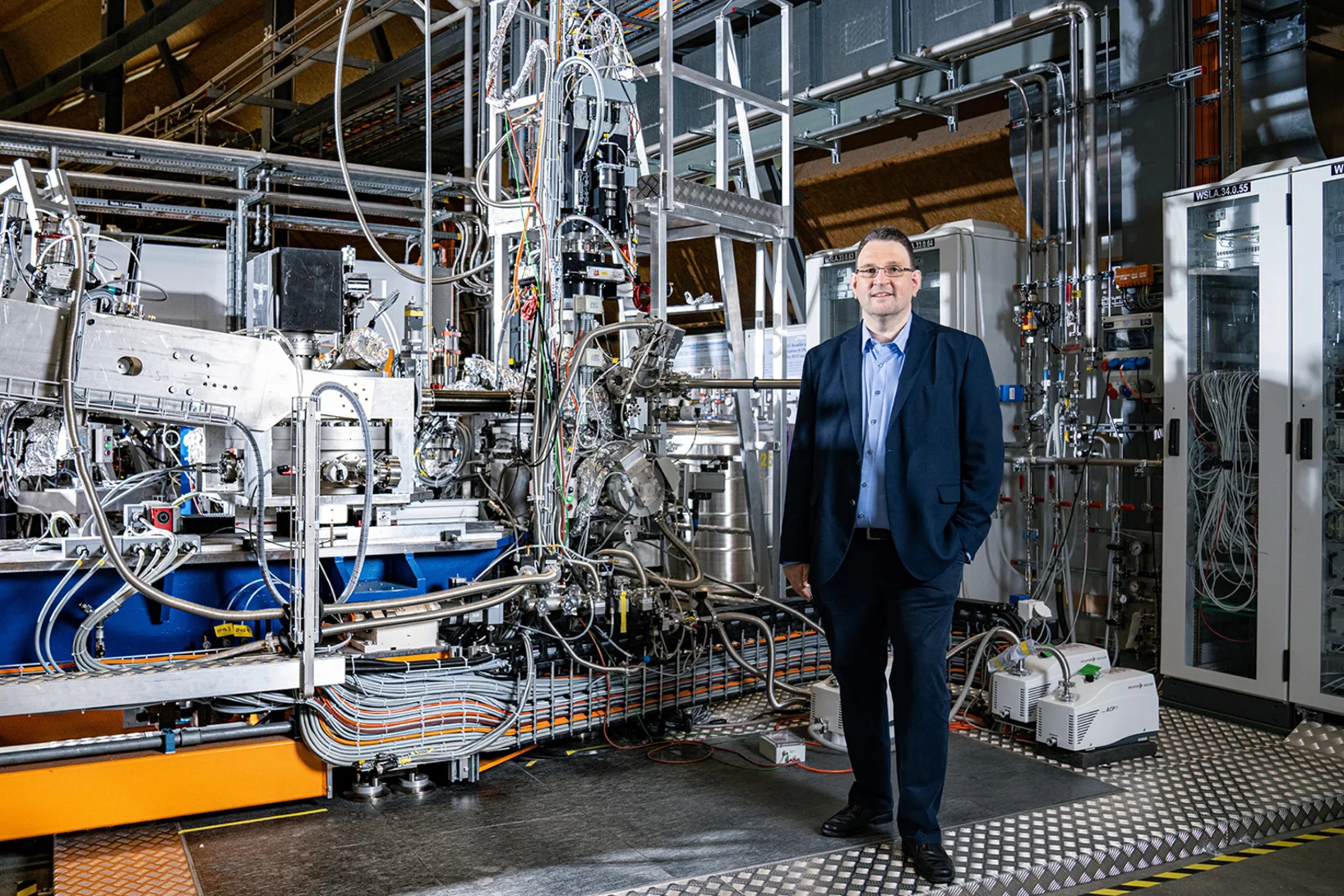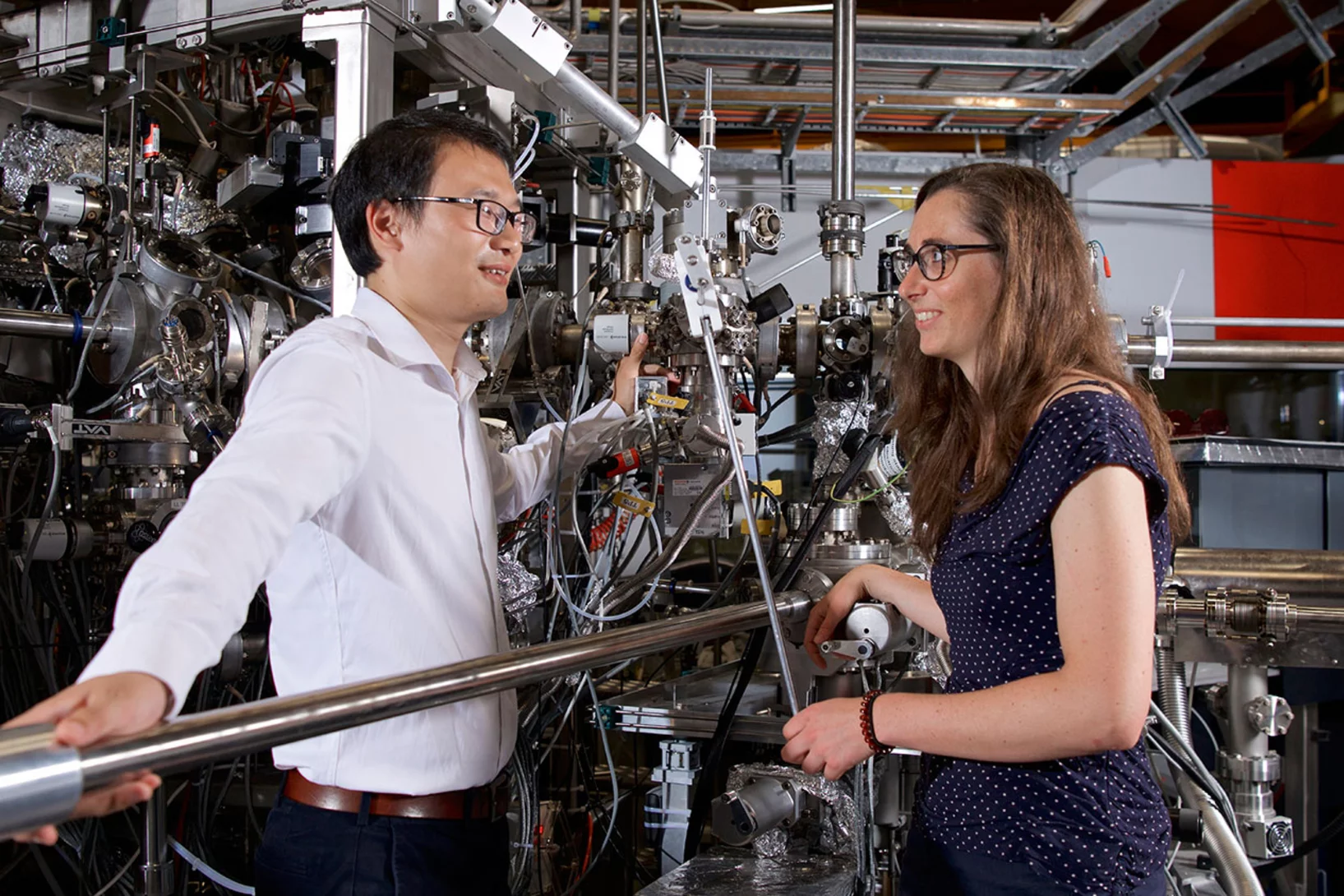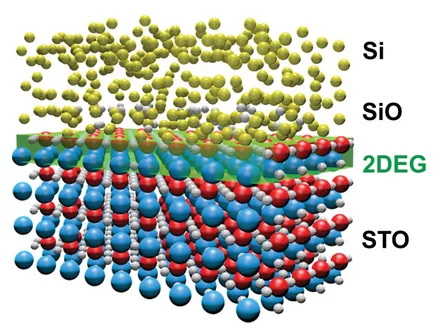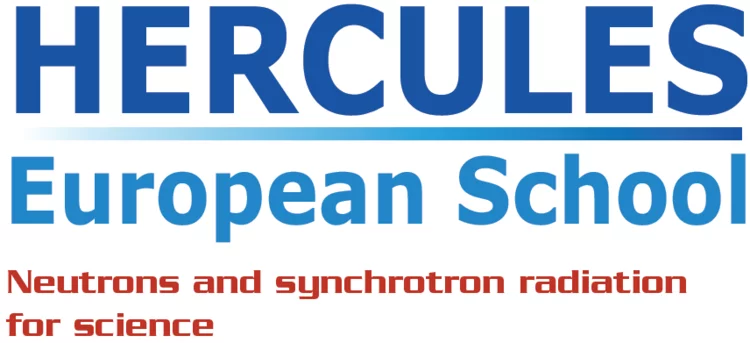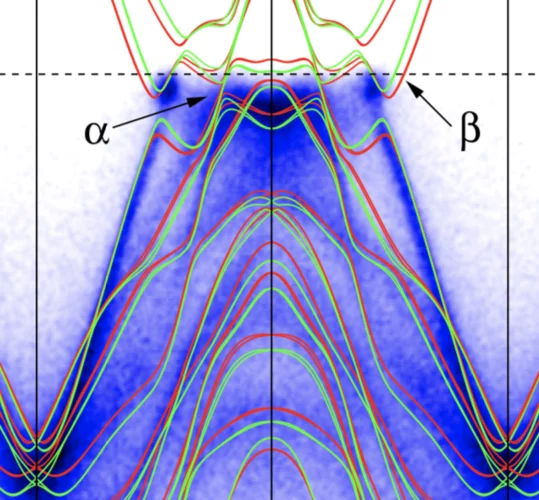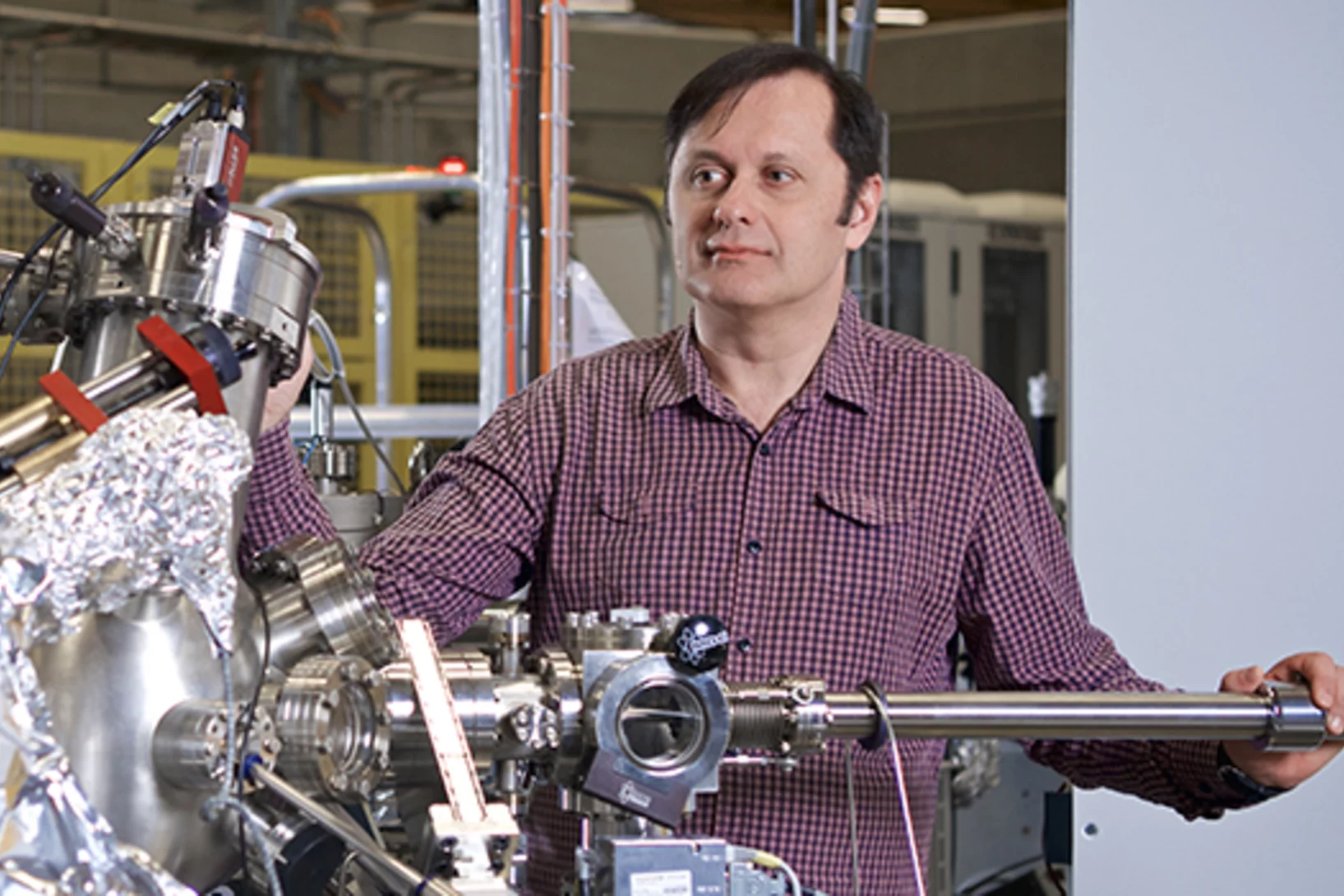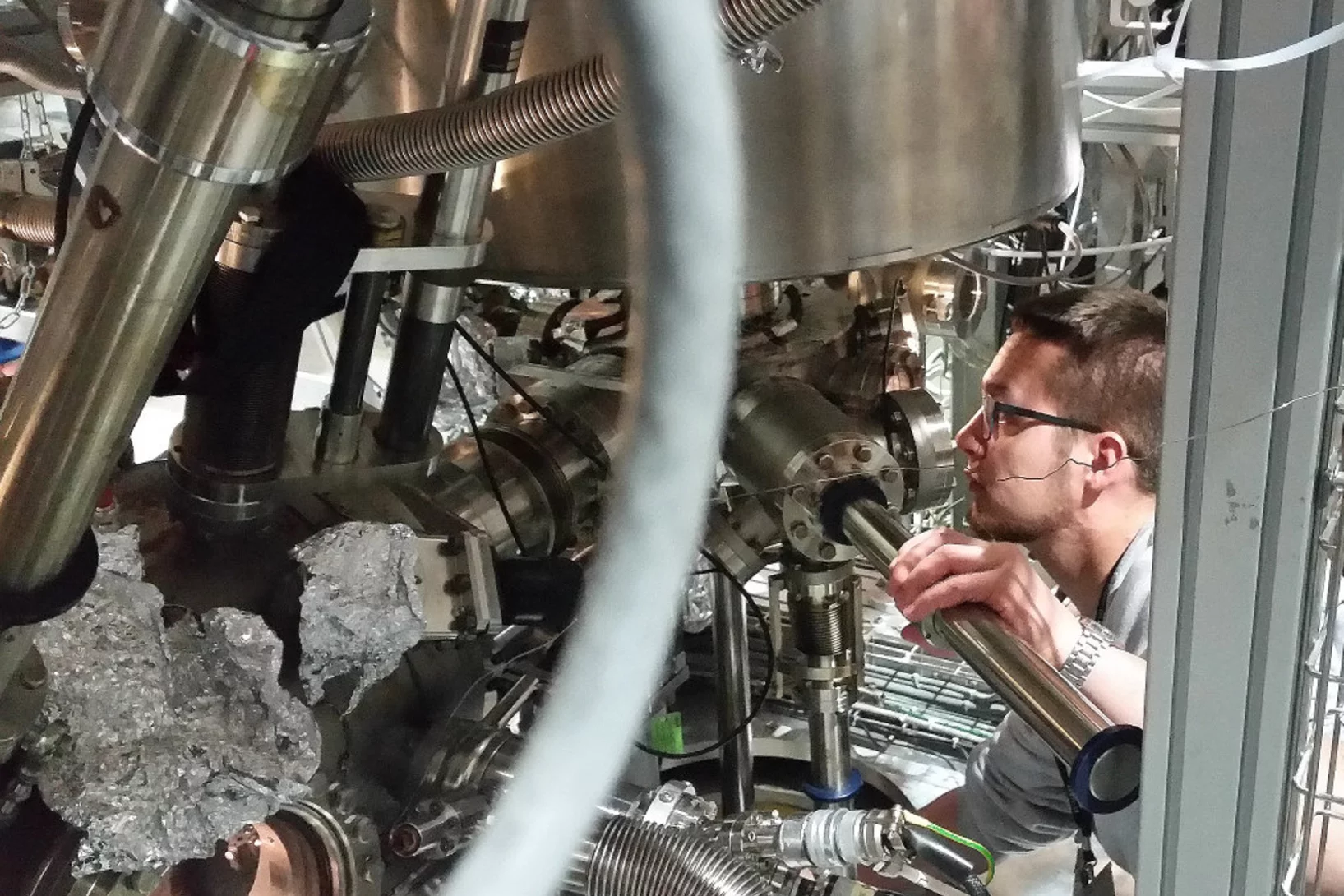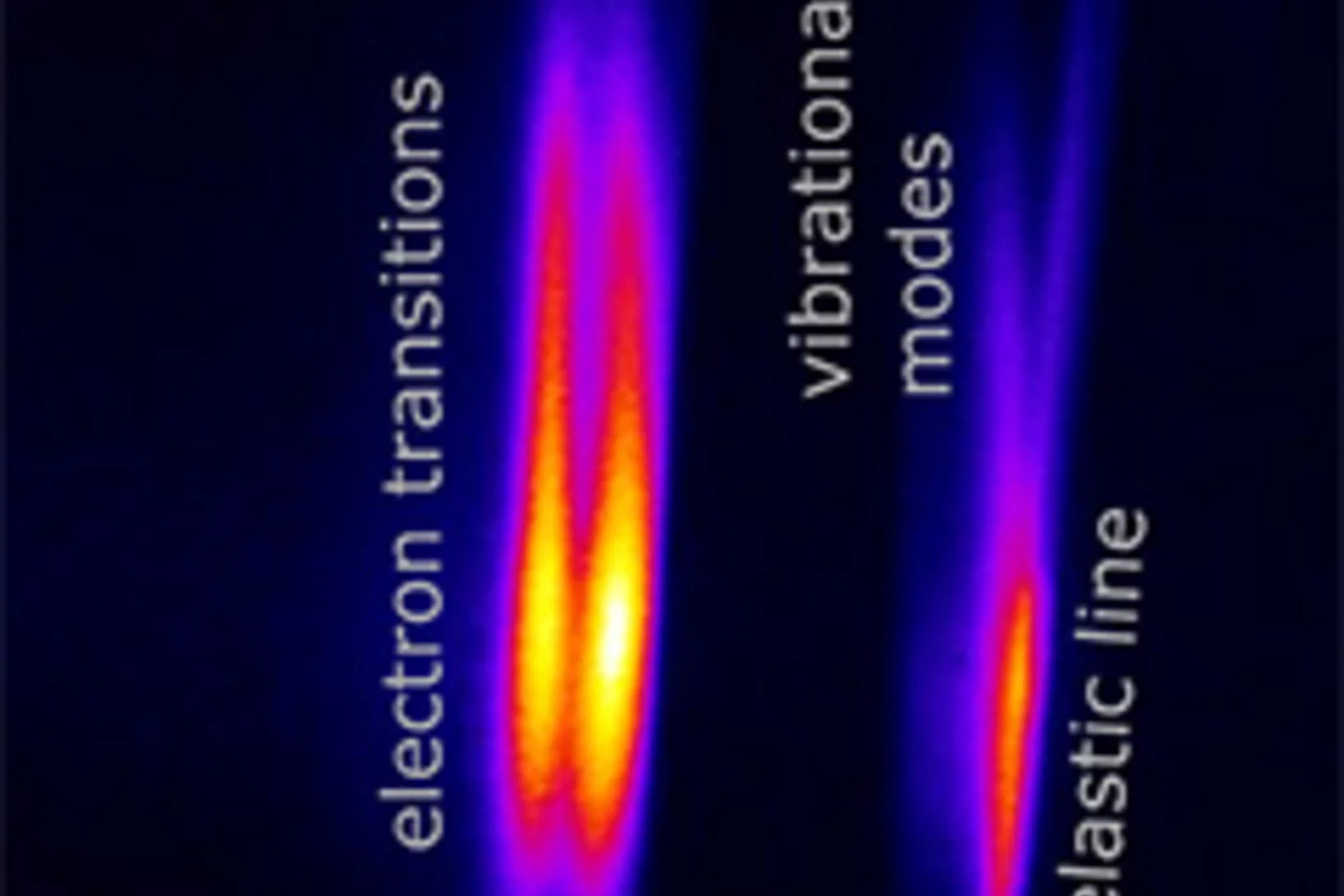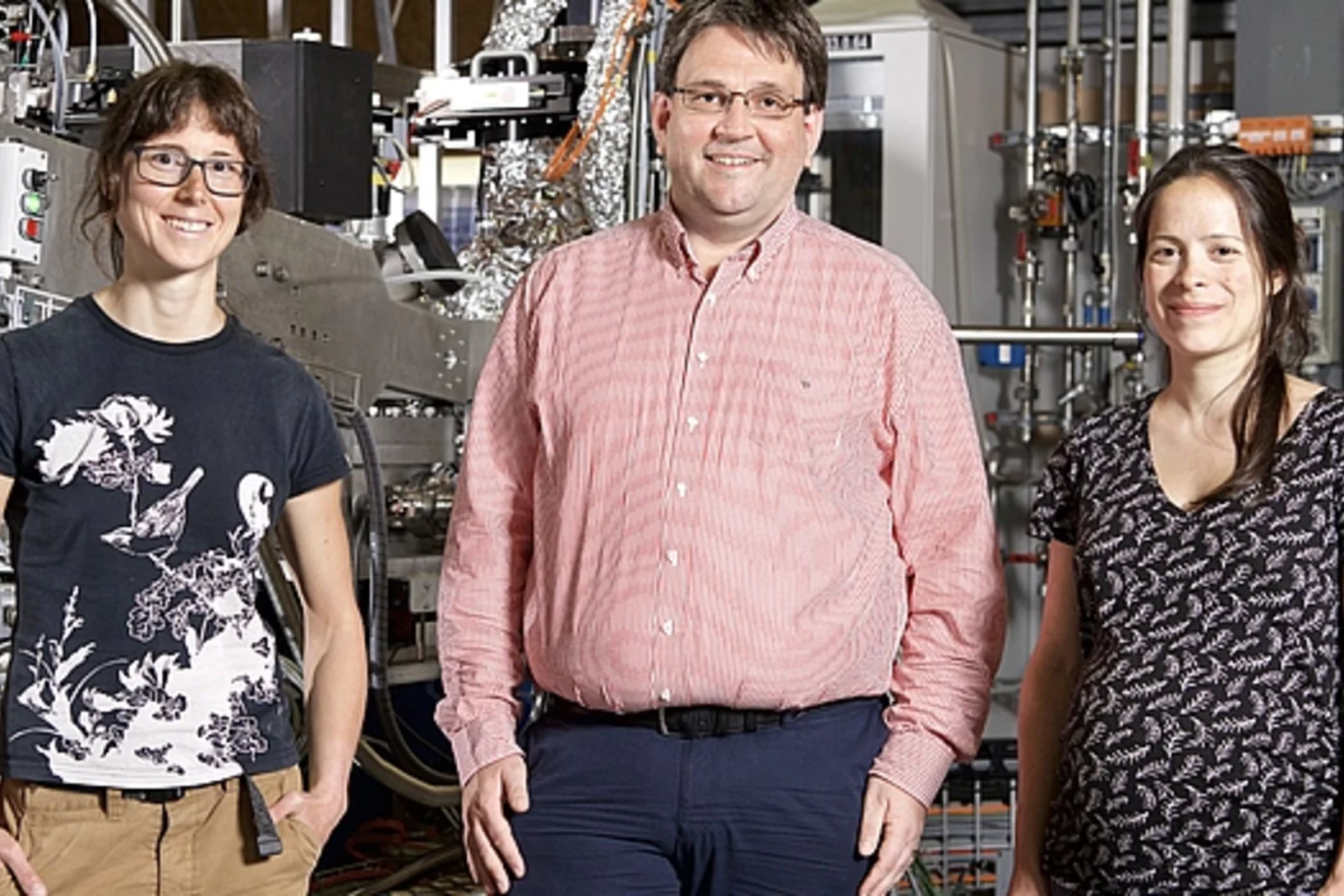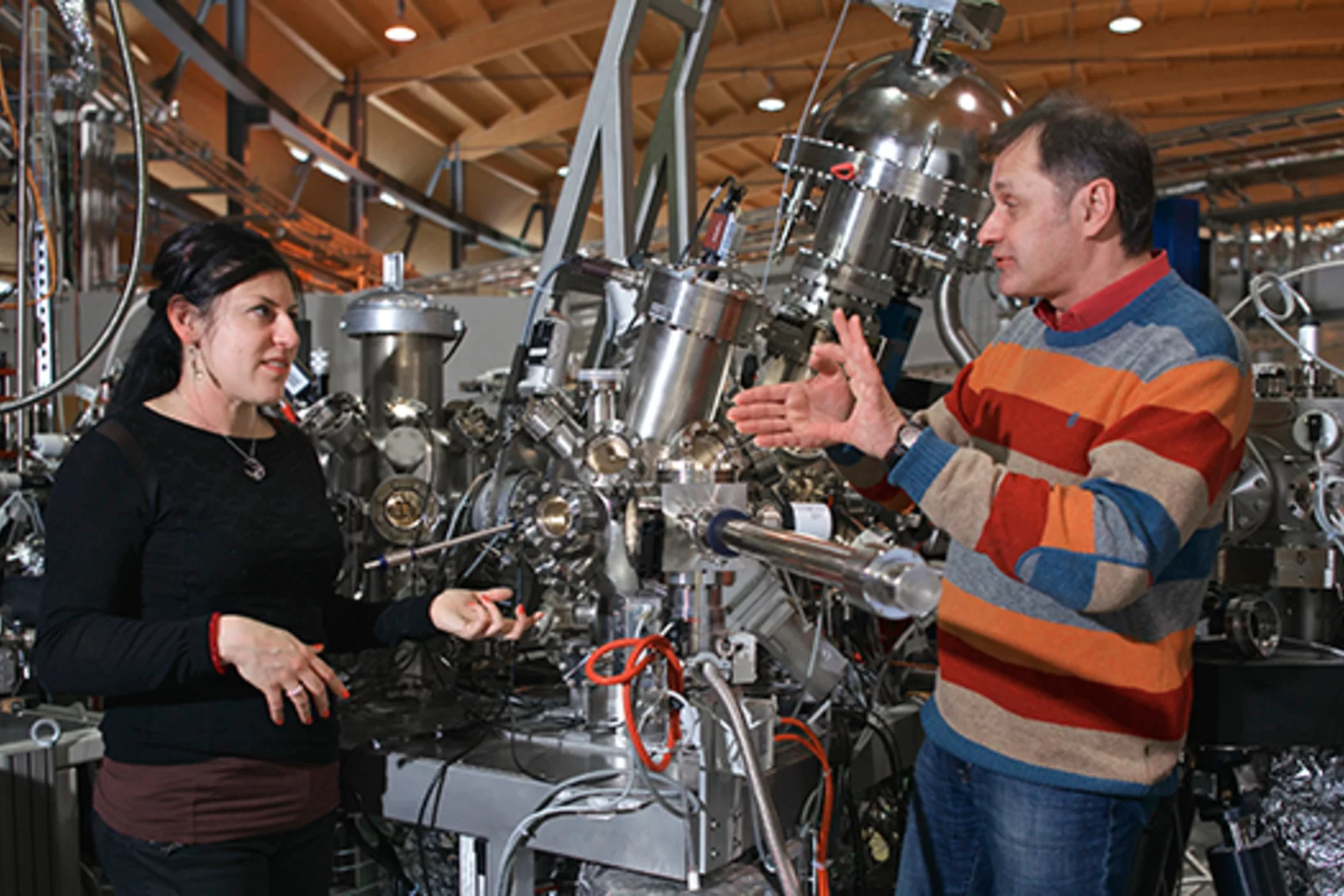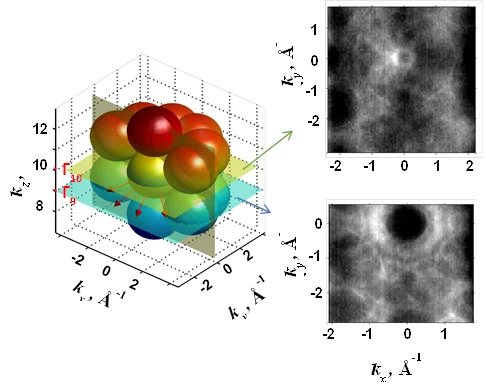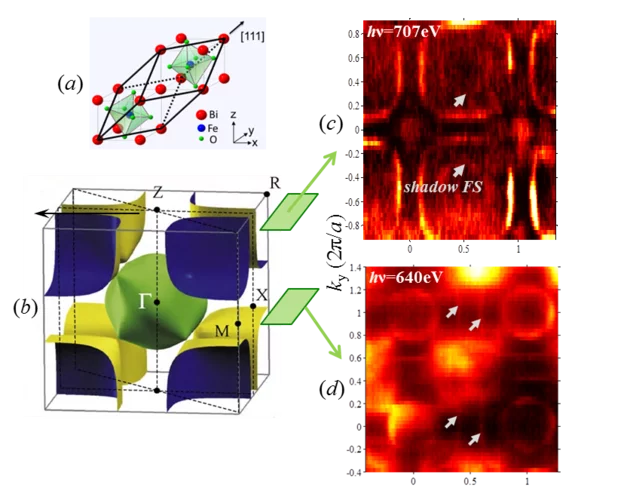Weyl spin-momentum locking in a chiral topological semimetal
Spin–orbit coupling in noncentrosymmetric crystals leads to spin–momentum locking – a directional relationship between an electron’s spin angular momentum and its linear momentum. Isotropic orthogonal Rashba spin–momentum locking has been studied for decades, while its counterpart, isotropic parallel Weyl spin–momentum locking has remained elusive in experiments. Theory predicts ...
Extreme ultraviolet for scalable silicon quantum devices
Experiments at the Swiss Light Source (SLS) show the potential of extreme ultraviolet light (EUV) to make the building blocks of scalable quantum computers.
Unveiling ultra-thin electron liquids in silicon
Soft X-rays enable scientists to visualise non-invasively the electronic properties of ultra-thin dopant layers buried within semiconductor wafers.
Mieux comprendre l'eau
Réalisation d’une carte de potentiel des molécules d’eau
Les semi-conducteurs atteignent le monde quantique
La technologie des semi-conducteurs pourrait être améliorée et prendre un nouveau virage, grâce à l’exploitation des effets quantiques dans des supraconducteurs.
Comprendre la physique à l’œuvre dans certains matériaux innovants
Une équipe internationale réunissant des chercheurs du PSI et leurs collègues pourrait avoir réussi à rendre utilisables certains matériaux fortement corrélés pour une application dans les domaines de la supraconductivité, du traitement des données ou encore des calculateurs quantiques.
Réaliser un matériau électronique sur mesure
Des chercheurs du PSI ont analysé un matériau qui pourrait entrer en ligne de compte pour de futures applications dans le domaine du stockage de données. Une astuce leur a permis de déformer de manière ciblée la structure cristalline de leur échantillon et de mesurer la manière dont cette déformation influençait les propriétés magnétiques et électroniques.
Des fermions de Weyl découverts dans une nouvelle classe de matériau
Jusqu’ici, l’existence de particules d’un genre spécial appelées fermions de Weyl n’avait pu être démontrée que dans certains matériaux non magnétiques. Mais des chercheurs du PSI ont maintenant réussi pour la première fois à prouver expérimentalement leur présence dans un matériau paramagnétique particulier.
Un matériau innovant qui présente aussi de nouvelles quasi-particules
Des chercheurs du PSI ont analysé à la Source de Lumière Suisse SLS un matériau cristallin innovant qui présente des propriétés électroniques encore jamais vues à ce jour. Ils ont entre autres réussi à détecter un nouveau type de quasi-particules appelées fermions de Rarita-Schwinger.
X‐Ray Writing of Metallic Conductivity and Oxygen Vacancies at Silicon/SrTiO3 Interfaces
Lithography‐like writing of conducting regions at the interface between SrTiO3 and amorphous Si using X‐ray irradiation opens ways for spatially controlled functionalities in oxide heterostructures.
HERCULES school 2019 at SLS
In the week of April 1-5 PSI welcomes 20 PhD students and postdocs taking part in the European HERCULES 2019 school on Neutron and Synchrotron Radiation. They will attend lectures and perform two days of practical courses at several beam lines of the Swiss Light Source.
Evidence of a Coulomb-Interaction-Induced Lifshitz Transition and Robust Hybrid Weyl Semimetal in Td-MoTe2
Using soft x-ray angle-resolved photoemission spectroscopy we probed the bulk electronic structure of Td-MoTe2. We found that on-site Coulomb interaction leads to a Lifshitz transition, which is essential for a precise description of the electronic structure. A hybrid Weyl semimetal state with a pair of energy bands touching at both type-I and type-II Weyl nodes is indicated by comparing the experimental data with theoretical calculations.
Vers de nouveaux transistors de puissance
L'industrie de l'électronique attend d'un nouveau type de transistor de puissance en nitrure de gallium qu'il offre des avantages considérables par rapport aux transistors à haute fréquence qui sont utilisés aujourd'hui. Mais de nombreuses propriétés fondamentales du matériau ne sont pas encore connues. Pour la première fois, des chercheurs du PSI ont visionné un flux d'électrons dans le transistor en question. Pour ce faire, ils ont utilisé une des meilleures sources de rayons X mous au monde, qui se trouve à la Source de Lumière Suisse SLS du PSI.
HERCULES at the Swiss Light Source
In the week of March 18-23 PSI welcomes 20 PhD students and postdocs taking part in the HERCULES 2018 school on Neutron and Synchrotron Radiation. They will attend lectures and perform two days of practical courses at several beam lines of the Swiss Light Source.
A new RIXS analyzer scheme based on transmission zone plates
PSI scientists have developed a new type of X-ray optics that allows for analyzing the emission in resonant inelastic x-ray scattering (RIXS) experiments. The new approach combines the energy dispersion with imaging capabilities. In a collaborative effort with research groups from Göttingen and Hamburg, two new classes of RIXS experiments, energy mapping and RIXS imaging, have been demonstrated.
Conducteur d'électricité ou isolant, au choix
L’oxyde de néodyme-nickel est un matériau qui, suivant la température, est soit un métal, soit un isolant. Cette transition peut être commandée par l’application d’une tension électrique, ce qui fait de ce matériau un candidat potentiel pour les transistors dans les appareils électroniques modernes. Des chercheurs à l’Institut Paul Scherrer PSI ont utilisé un développement perfectionné et sophistiqué de la diffusion de rayons X et réussi à saisir la cause de cette transition: la réorganisation des électrons autour des atomes d’oxygène.
Ralentissement du flux électrique peut montrer la voie vers des ordinateurs économes en énergie
Les ordinateurs et les autres appareils électroniques représentent aujourd’hui une part considérable de la consommation d’énergie, une part dont il est pratiquement impossible de modifier l’importance avec les technologies actuellement utilisées. Les puces électroniques qui prendront place dans les appareils économes en énergie de demain devront donc être composées de matériaux innovants. De nouveaux résultats de recherche indiquent une voie possible comment on peut obtenir ces matériaux.
Fermi states and anisotropy of Brillouin zone scattering in the decagonal Al–Ni–Co quasicrystal
Quasicrystals (QCs) are intermetallic alloys where excellent long-range order coexists with lack of translational symmetry in one or more dimensions. These materials have a high potential in application as a material for a solar cells, hydrogen storage applications, heat insulating layers, and others.
Concept of a multichannel spin-resolving electron analyzer based on Mott scattering
The spin of electron plays a crucial role in many physical phenomena, ranging from the obvious example of magnetism, via novel materials for spintronics applications, to high-temperature superconductivity. Spin- and angle-resolved photoelectron spectroscopy (SARPES) gives the most direct access to the spin aspects of the electronic structure, but the one-channel detection principle of all presently available SARPES spectrometers severely limits their efficiency. A team of Swiss and Russian scientists has developed a revolutionary concept of a multichannel electron spin detector based on Mott scattering as the spin selective process and imaging-type electron optics.
Fermi Surface of Three-Dimensional La1−xSrxMnO3 Explored by Soft-X-Ray ARPES: Rhombohedral Lattice Distortion and its Effect on Magnetoresistance
A research team led by scientists from the Swiss Light Source has for the first time established three-dimensional (3D) electronic structure of the perovskite compound La1−xSrxMnO3 connected with its colossal magnetoresistance. Instrumental for this study has been the use of the new experimental technique of soft-x-ray ARPES, available at the ADRESS beamline, with its intrinsically sharp definition of 3D electron momentum.


